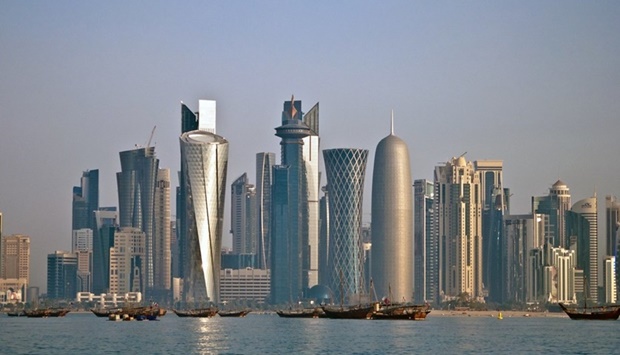Qatar’s GDP per capita has been estimated by researcher FocusEconomics to scale up to $101,124 by 2026.
This year, FocusEconomics estimates the country’s GDP to be $79,881, $81,260 (2023), $86,222 (2024) and $93,617 (2025).
Qatar’s GDP this year and in 2023 has been estimated at $213bn, $223bn (2024), $240bn (2025) and $257bn (2026).
The country’s GDP growth this year will be 4.3% this year, 2.8% (2023), 2.8% (2023), 3.5% (2025) and 4.1% (2026).
Current account balance, the researcher noted, will be $44.2bn this year, $35.3bn (2023), $27.6bn (2024), $32.2bn (2025) and $37.1bn (2026).
FocusEconomics estimates Qatar’s merchandise trade balance to be $79.5bn this year, $78.8bn in 2023, $76.2bn (2024), $78.8bn (2025) and $87bn (2026).
Merchandise exports may exceed $110bn this year, 2023 and 2024 and $116.4bn (2025) and $128.5bn (2026).
Fiscal balance (as a percentage of Qatar’s GDP) has been estimated at 8.4% (2022), 5.5% (2023), 2.6% (2024), 3.3% (2025) and 4% (2026).
The country’s debt (as a percentage of GDP) is estimated to fall continually, from 46 this year to 42 in 2026. Next year it may drop to 42.6, 43.9 (2024) and 43 (2025).
Terming Qatar’s outlook stable, FocusEconomics said the non-energy economy appeared to perform well in Q1: The private-sector PMI averaged well in expansionary territory amid the reduced impact of the pandemic, while visitor arrivals soared in annual terms.
However, the energy sector seemed to perform relatively poorly, with a double-digit annual decline in oil and gas output during February. The early signs for Q2 are positive: The PMI hit a series high in April, amid strong rises in both output and new orders, with the construction sector the top performer.
Moreover, visitor arrivals were up 635% year-on-year in April.
Qatar recently signed an energy partnership with Germany and pledged investment worth a total of roughly $18bn in Spain and the UK.
“These moves bode well for Qatar’s trade ties and diversification efforts,” FocusEconomics said.
GDP growth should accelerate this year due to stronger private consumption, higher energy prices, ongoing gas sector investment, improved ties with Gulf neighbours and the boost to tourism late in the year from the FIFA World Cup. The reintroduction of Covid-19 restrictions remains the main downside risk.
FocusEconomics panellists see a 4.3% rise in GDP during 2022, which is unchanged from last month’s forecast, and 2.8% growth in 2023.
Inflation rose from 4.4% to 4.7% between March and April. Price pressures are expected to remain elevated for the remainder of the year, on elevated commodity prices and stronger domestic consumption.
FocusEconomics panellists see inflation averaging 4% in 2022, which is unchanged from last month’s forecast, and 2.4% in 2023.
Business / Business
Qatar’s GDP per capita estimated to scale up to $101,124 by 2026: FocusEconomics


